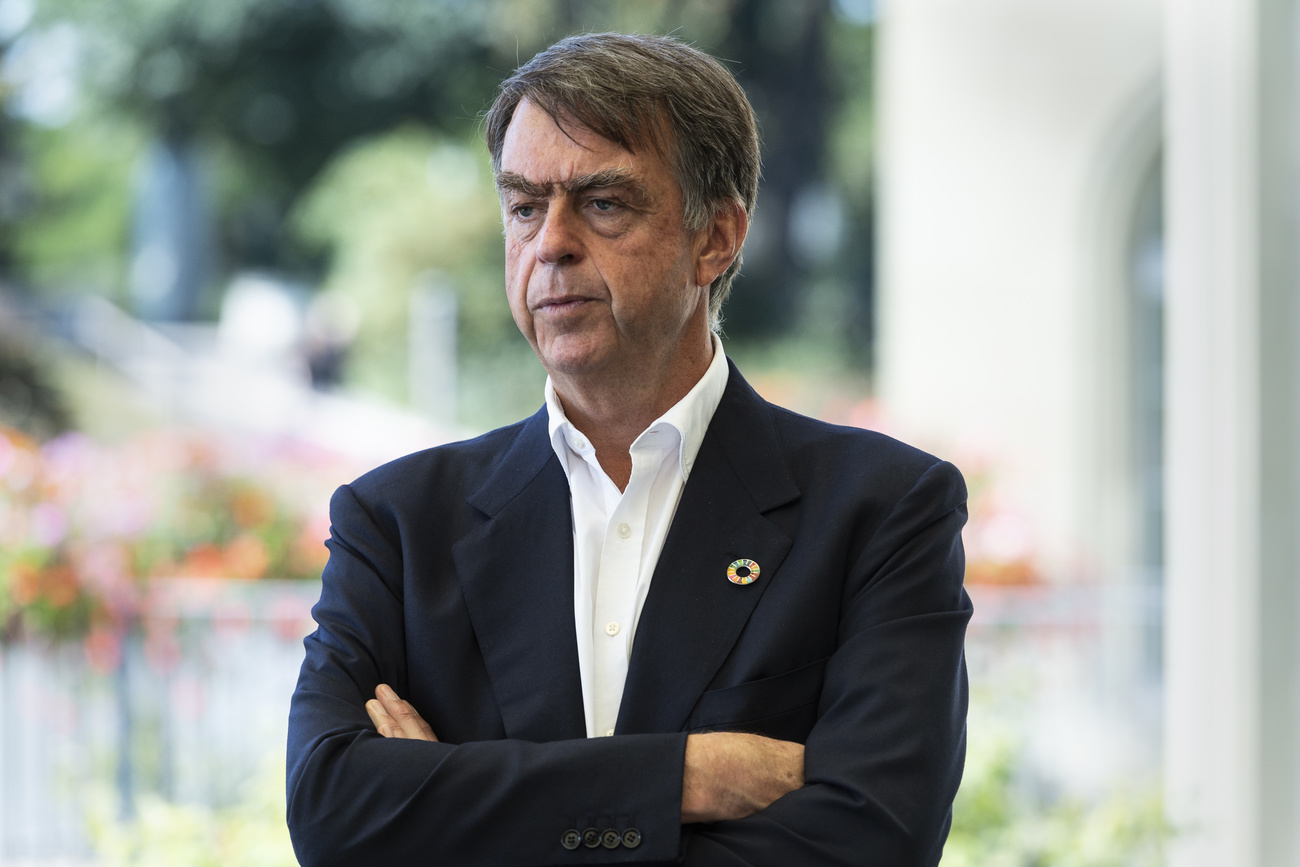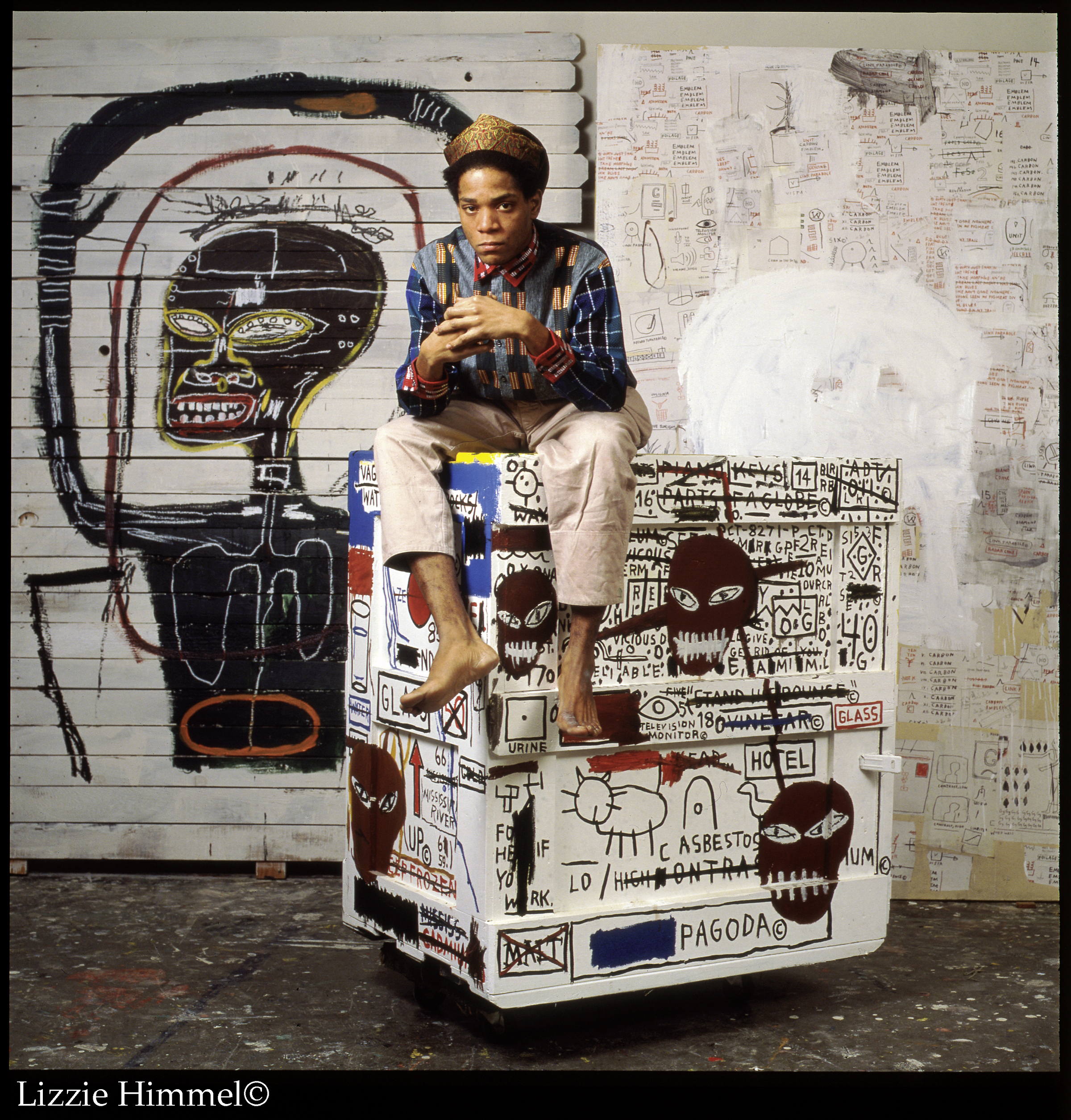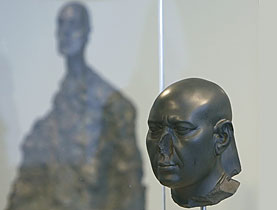An artist who always strove to go higher

Painter Giovanni Segantini had two great passions: the Swiss Engadine Alps and light, resulting in works of great power and beauty.
The remarkable life and oeuvre of the artist, who grew up in Milan and died in the mountains near Maloja, are now the subject of a major exhibition at the Beyeler Foundation near Basel.
Descendents of his family, including exhibition co-curator Diana Segantini, still live in Maloja where they look after his house, the Villa Kuoni.
“Giovanni Segantini was described by the family as being a very down to earth, humble person who had a very difficult childhood and never forgot those difficulties,” Diana Segantini told swissinfo.ch.
“He was a brave man as well, he went up into the mountains, he always wanted to go higher up and really live in nature, although it was cold.”
The show, which opened on January 16, brings together 45 paintings and 30 drawings from all phases of his career, including many works which have rarely been seen before – many of them tracked down by Diana Segantini.
But the curators say it is not perfect: some of his most famous works are missing, in particular Alpine Triptych in painting form – which he was working on at his premature death aged 41 – deemed too fragile to be moved from its home at the Segantini Museum in St Moritz.
Fresh look
Nevertheless they hope that the exhibition will offer a fresh look at the artist, who largely remained forgotten in Switzerland until a Zurich exhibition in 1990 and was sometimes banished to the realm of the kitsch for his depictions of mountain life.
In particular the curators seek to show how Segantini has made a contribution to the development of modern art.
“Especially the Beyeler Foundation with its collection of modern paintings will change the view of the artist as the works will be shown near van Gogh, Monet and Cézanne,” said Guido Magnaguagno, co-curator and Segantini expert.
Segantini (1858-1899) was born in Arco on Lake Garda, then part of the Austro-Hungarian Empire, into a poor family. He was destined to remain stateless during his lifetime after a relative annulled his citizenship. Only after his death was he was awarded Swiss papers.
His artistic talent was discovered while he was living in Milan and the exhibition opens with dark-hued urban scenes and portraits of upper class Milanese – much in contrast to his later works.
Segantini then moved to the northern Italian lake district of Brianza, taking with him Bice Bugatti, sister of his friend, the furniture designer Carlo Bugatti, and relative of the car designers. They remained unmarried because of his statelessness.
Love of light
It was here Segantini created his first masterworks, including Ave Maria on the Lake (see gallery) where the artist’s emerging love of light is powerfully brought to the fore.
But it is for his mountain paintings that Segantini is most well known, executed while living in the Swiss villages of Savognin and Maloja.
“Only the clear blue skies in the mountains and clear, fresh air would give him this light which we can see in the exhibition in different works,” curator Segantini said.
The man who was raised in the industrial city of Milan had developed a deep reverence for the Alps. Mountains were, for him, a paradise on earth.
“I always strove upward. From the hills I moved up to the mountains, among the peasants, shepherds and mountain dwellers… it was in these regions that I fixed my gaze more boldly on the sun whose rays I wished to conquer. It was here that I studied Nature most deeply, her most vivid forms and her most luminous colours,” wrote the artist.
Divisionism
For this vision Segantini developed his characteristic Divisionist technique, using pure, mostly horizontally layered bands of complementary colours. It can be seen to great effect in the paintings Return from the Woods and Midday in the Alps, which forms the exhibition’s poster.
“It was his invention because he looked for more light in his paintings, like van Gogh in Provence,” explained Magnaguagno.
“This technique was very important in Italy and he founded a whole school of Italian Divisionists.”
Segantini spent hours outside, painting huge canvases in all weathers – as photographs that can be seen in the show attest. The artist was sometimes accompanied by his younger friend and pupil Giovanni Giacometti, father of the sculptor Alberto.
Death
The painter became celebrated during his lifetime, showing his unique view of the Alps at international art fairs and at the first Venice Biennale in 1895.
However he was dogged by money problems, so the family has no left paintings today, explained Diana Segantini.
The Alpine Triptych, which can be seen at the Beyeler in the form of rediscovered drawings, was destined for the 1900 Universal Exhibition in Paris. Under the titles Life-Nature-Death, it was designed to show the harmonious cycle of nature.
It was while working on the middle panel on the 2,731-metre high snow-covered Schafberg that Segantini died after suffering a ruptured appendix. His last words: voglio vedere le mie montagne (I want to see my mountains).
Had he lived, Magnaguagno believes that Segantini would have moved towards an abstract style, as evidenced by his later works.
But the curator hopes that people will be touched by Segantini’s vision. “In the centre of his work is not art, but love for nature, mankind and animals,” he told swissinfo.ch.
“And of course, love of the mountains, especially the Swiss Alps because they are the most beautiful thing in the country.”
Segantini runs at the Beyeler Foundation from January 16-April 25, 2011 and is curated by Diana Segantini, Guido Magnaguagno and the foundation’s Ulf Küster.
Loans come from Otto Fischbacher Giovanni Segantini Foundation, the Segantini Museum, St Moritz, the Swiss Gottfried Keller Foundation, Kunsthaus Zurich fine arts museum and the Bündner Kunstmuseum, Chur, and from further museums in Milan and the United States, as well as numerous private collections.
The Villa Kuoni chalet in Maloja, where Segantini spent the last five years of his life, has remained in the family and is furnished as it was 100 years ago. Great-granddaughter Diana and her mother Ragnhild look after and live in the house. Diana organises exhibitions and events there as well (see links).
In 2010 the Beyeler Foundation welcomed 385,146 visitors, up 18 per cent on 2009. This was the second best visitor count after the 10th jubilee year 2007 (389,385, including 12,000 free admissions. A good half of visitors come from outside Switzerland, the museum reported at its annual news conference on January 14.
The Foundation’s international projects in Britain, France, Spain, Austria, Canada and the United States were seen by a million people. In addition, last autumn the foundation in Riehen, near Basel, welcomed the 4 millionth visitor since 1997, the year it opened.
The most popular exhibitions were: Vienna 1900 – Klimt, Schiele and their Times, Henri Rousseau and Basquiat. Vienna 1900 has been prolonged until February 6, 2011.
On February 25, 2010, the foundation’s founder, Ernst Beyeler, died aged 88, a great loss still being mourned, said Sam Keller, the director of the foundation.

In compliance with the JTI standards
More: SWI swissinfo.ch certified by the Journalism Trust Initiative















You can find an overview of ongoing debates with our journalists here . Please join us!
If you want to start a conversation about a topic raised in this article or want to report factual errors, email us at english@swissinfo.ch.